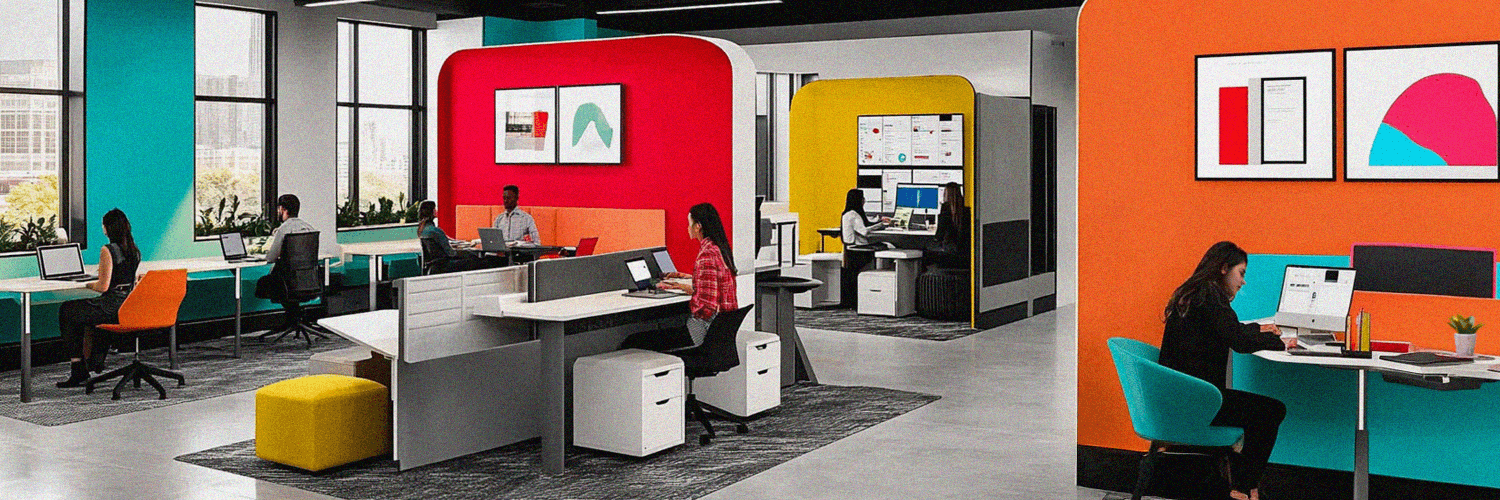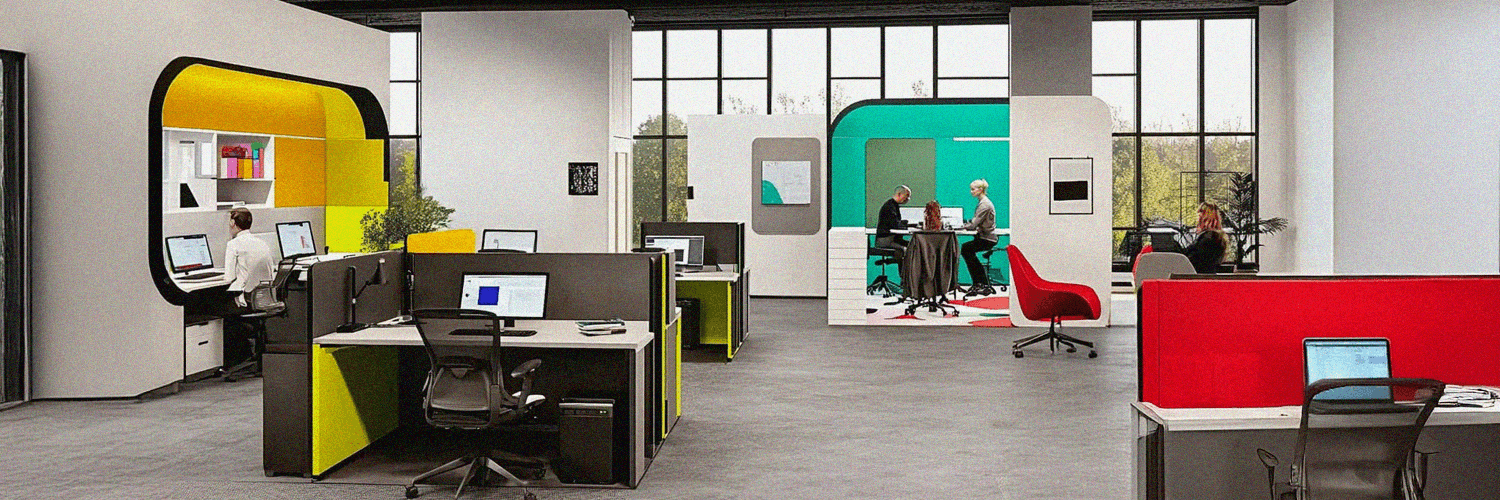We used to think there’s little likelihood our generation will live through life-altering, world-turned-upside-down moments. Alas, that was not the case. Before we even realized what was going on, social gatherings turned into video calls, work attires turned into pajamas (admit it, that actually happened!), and meeting rooms turned into living rooms and floating heads on screens.
The COVID-19 pandemic did not do a 180 on everything in our lives. Things were already undergoing major shifts in many areas of our lives. We ordered more things online, we kept in touch with friends and family via online tools, and a good chunk of the office workers had remote work options as part of their benefits packages.
The pandemic did, however, accelerate things to a point where a lot of people still can’t make much sense of what’s going on. To be honest, we can’t blame them, as many areas of our lives have to be reimagined now -- meeting rooms and workspaces included.
How do we do that? Let’s take a close look at the matter!
Workplace Culture: The Foundation of a Healthy Meeting Room
As any entrepreneur will tell you, healthy businesses rely on hiring and retaining the right people. The right people will do the right things and they will align themselves with the organization’s core values and mission to give you value for your company.
That's called "workplace culture" in fancier terms -- and while in an ideal world, it would develop organically, the truth is that it frequently needs a little nudge. Workplace experience and employee experience are tightly connected to building the right company culture.
With the COVID-19 fast-forwarding us into a future we merely imagined in 2019, the ways to create a healthy workplace culture and experience have changed. The effort to shift to the "new normal" is definitely worth it, though, as nearly half of employees agree that company culture is very important to them.
Once Upon a Time in Traditional Meeting Rooms…
People met face to face, usually around a rectangle or round-shaped table, looking at the speaker, frequently zoning out mentally, and sometimes raising their very physical hand to speak themselves.
These rooms were not the most comfortable, and sometimes they were not the most efficient either. Even more, if by any chance the meeting included people working from a remote location, they would usually feel severely left out.
The traditional workplace strategy worked fine -- but it was just that, fine. Most companies were not very eager to let employees work remotely, and even if they did, most of them only allowed for a limited number of WFH days every month. Clearly, that all changed when everyone went into lockdown, all over the world, almost simultaneously.
The event not only triggered rapid mentality changes, but it also proved, statistically, that people can really be efficient (if not more so) when they work remotely. In fact, the numbers are quite irrefutable: more than three-thirds of employees were more efficient working remotely.
What Employees Really Want From Their Meeting Rooms & Office Spaces
As people get vaccinated and countries relax their COVID-19 restrictions, a lot of questions are still left unanswered in the business space.
Some of the most poignant, recurrent questions are related to how we will all "return to work" (i.e. office work): Will people want to do it? Will companies force them to? Or will most businesses take the hybrid route to provide a healthy work/ life balance to their employees?
And if we all take the third option (which is, in fact, the most likely one of all), how will office spaces adapt to the newly found and reshaped employee well-being? How will they provide flexibility in the workspace?
How Technology Helps Bridge the Gap between the Old and the New Normal
Given enough time, there's little good technology can't actually fix in terms of business tools and support. Such is the case with the modern meeting room as well. If 2020 was a race to attract more people to one video conferencing tool or another, 2021 and beyond will be a race to find hybrid workplace solutions that truly work for everyone.
Companies are already working on it, envisioning a future workspace that allows everyone to participate in meetings in the fullest sense of the world, regardless of their location. In principle, there are four main pillars to build the future workplace on:
Environments
After more than one year of working remotely, one big screen in the middle of a dull conference room will probably not cut it for most people. Quality sound systems, large panels of screens, blending virtual meeting backgrounds to eliminate distractions -- all these things can make a major difference.
Flexibility
With COVID-19 still a threat in most parts of the world and different variants popping up every few months, it makes sense that individual comfort levels will play a major role in how the new normal "designs" work spaces. Regular employee screenings, proper ventilation systems, social distancing, and providing everyone with the option to work from home when they don't feel safe are all important elements companies need to consider going forward.
Accomodations
Hybrid work spaces require hybrid solutions. You can't just pull people from their very comfortable couch, where meetings happen in front of their very noses, bring them into large meeting rooms, and expect them to like it.
Sure, there are always people who would much rather have the traditional work space available for them. But there are also people who won't say "no" to hybrid solutions -- such as the aforementioned panels of screens or even individual screens for every person in the room.
Platforms
Hardware solutions are definitely important, but we must not forget about the need to adapt software to the new hybrid work space as well.
For instance, communication tools have to be aligned across companies to make things easier for everyone and make sure that all meeting participants have full access to the features they need to be efficient.
Furthermore, booking meeting rooms and making sure conflicts are averted will also be important in a world where employees are not bound to the classic office space. Not that we're bragging, but at YAROOMS, we have built a platform that allows you to avoid double bookings, increase employee collaboration, and improve office and meeting room scheduling efficiency. This saves time and energy for everyone, allowing your team to focus on what they do best.
Best Practices in Creating a Hybrid Workspace Meeting Rooms
While things are still not perfectly ironed out in the world of hybrid meeting rooms and office spaces, some best practices can definitely be put in place. The most important ones include:
Take the Remote-first Approach
Don't build the traditional meeting room only to install remote-control capabilities in it. Instead, when thinking of new meeting rooms, think about what remote participants will need when they attend online meetings. It's not just about cameras and microphones -- it's also about screens and communication tools.
Consider Remote Employees and In-office Employees as Equally Valuable
Behavioral change (i.e. the ability of remote workers to participate in meetings in a full sense of the word) will become an important factor for companies looking to improve their overall productivity. Therefore, it may be wise to consider whether remote employees are of the same value as in-office workers.
Always Establish Quality Control Through Regular Screens
As technology brings us closer, the importance of regular screens within business meetings cannot be understated. It's not enough to have big screens if they start disconnecting regularly. Therefore, ensuring quality control at all times is crucial for companies who would like to see their hybrid work spaces thrive.
Avoid "Airconditioned Cubicles"
Hybrid work spaces also require hybrid furniture, including desks that can be adjusted to fit any postures or visual preferences of employees, both at home and in the office.
Invest in Proper Remote Team-Buildings
The reason so many people disliked remote team-buildings is actually simpler and more painful than most would admit: they were simply half-baked. As companies start to embrace the hybrid work space paradigm, it is wise to invest in proper technology and tools for remote teams.
Build Meeting Rooms with a Shortening Attention Span
With technology getting more advanced every year, the attention span of people has been going down as well. Therefore, business meetings need to adapt accordingly as well, by turning into a more abbreviated form of communication.
Always Put Your Company's Core Values at the Heart of Every Meeting Room
Whether your company is expanding or hiring, it is important to make sure that your core values are never compromised. That's why every new meeting room must be designed to reflect the purpose behind it.
The world has changed. Work has changed. People's attitudes towards their jobs have changed. It is high time we all adapt to the old normal traversing into the new normal in terms of how we build, maintain, and fine-tune our work spaces as well. And while things might seem confusing right now, one thing is for certain: they won't stay so for too long, so it's best for businesses to ride the wave of changes, rather than be drowned by it.
Are you ready to join the future of work?












